- HOME
- SYMPOSIUM & SEMINAR
- The 105th IROAST Seminar 第105回IROASTセミナー開催のお知らせ
SYMPOSIUM & SEMINAR
(Report報告)The 105th IROAST Seminar was held 第105回IROASTセミナーが開催されました
11月7日、赤井教授(産業ナノマテリアル研究所)、細川特任教授(産業ナノマテリアル研究所)、及び中島陽一准教授(大学院先端科学研究部)が世話人となり、第105回IROASTセミナーが開催されました。会場はもとよりオンラインにより学内外から教員及び学生が参加しました。
ウィグナー物理学研究センター(ハンガリー)のLászló Pusztai教授(IROAST卓越教授)が、「液体の構造を理解する:石器時代から人工知能まで」と題して興味深い講演をおこないました。
Pusztai先生は、今年度2回目の来学で、今回は約2週間滞在し、本学の教員等との国際共同研究の打ち合わせをおこなう予定です。
On November 7, 2023, the 105th IROAST Seminar, organized by Prof. Ichiro AKAI (IINa), Prof. HOSOKAWA (IINa), and Associate Prof. Yoichi NAKAJIMA (FAST), was held. Faculty members and students from inside and outside of the university and participated in the seminar, not only at the venue but also online.
Prof. László Pusztai (IROAST Distinguished Professor), Wigner Research Centre for Physics (Hungary), gave an interesting lecture titled "Understanding the structure of liquids: from the stone age to artificial intelligence".
Dr. Pusztai is visiting our university for the second time this fiscal year and will stay at Kumamoto University for about 2 weeks to discuss international joint research with faculty members of our university.
*IINa: Institute of Industrial Nanomaterials, Kumamoto University
*FAST: Faculty of Advanced and Science and Technology, Kumamoto University
■Organizer世話人(司会)
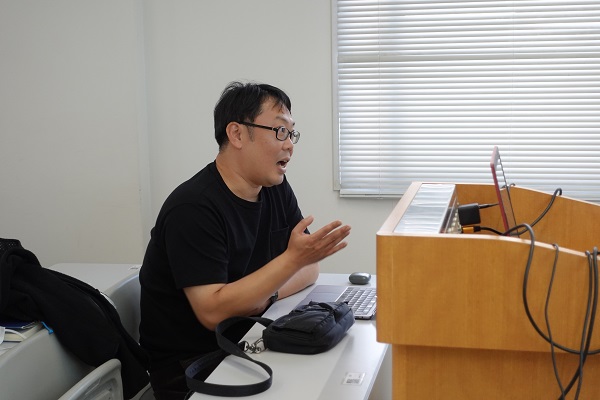
Associate Prof. Yoichi NAKAJIMA, FAST
中島 陽一 准教授(大学院先端科学研究部)
■Speaker|講演者
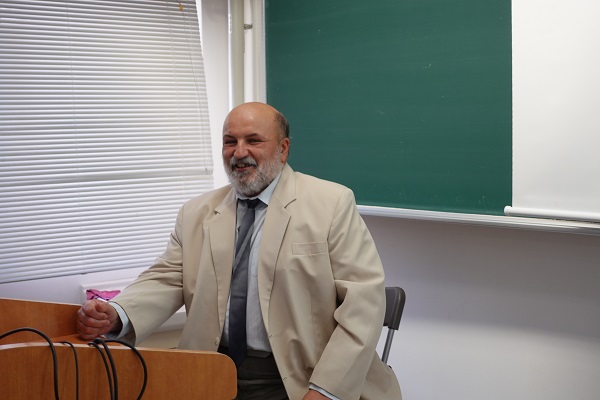
ウィグナー物理学研究センター(ハンガリー)László PUSZTAI教授(IROAST卓越教授)
Prof. László PUSZTAI (IROAST Distinguished Professor), Wigner Research Centre for Physics, Hungary
■At Venue|会場の様子
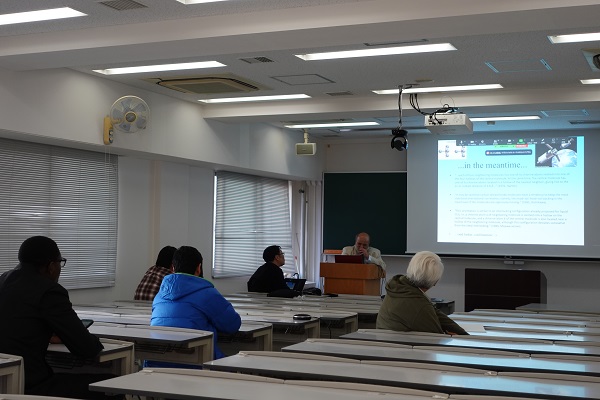
■Online|オンライン
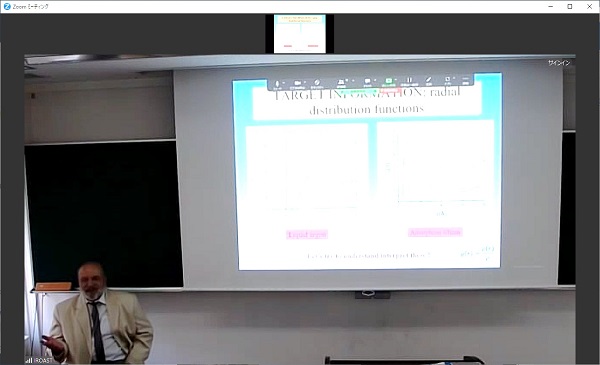
■Q&A|質疑応答
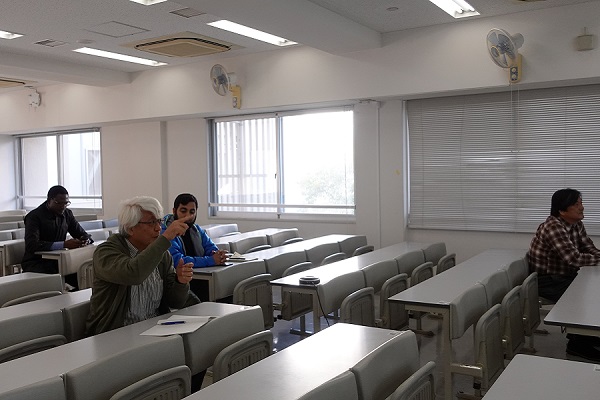
■集合写真|Group Photo
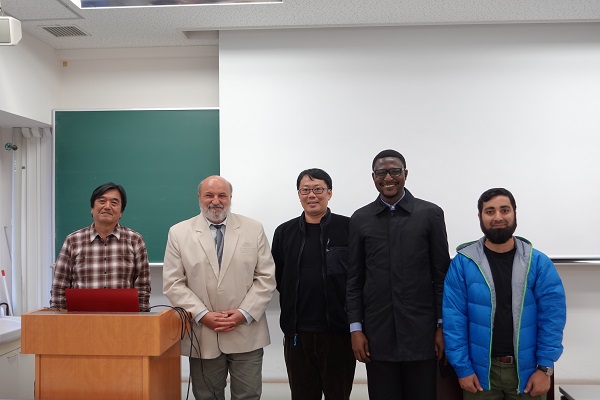
The 105th IROAST Seminar 第105回IROASTセミナー開催のお知らせ

国際先端科学技術研究機構(IROAST)は、ラスロー プスタイ IROAST卓越教授よる第105回IROASTセミナーを下記の通り開催いたします。
興味のある方はどなたでもご参加いただけます。多くの皆さまのご参加をお待ちしております。
本セミナーは英語で行います。事前登録は不要です。
1. 日 時:令和5年11月7日(火)14:00~15:30
2. 会 場:黒髪南E1(理学部1・2号館) C226大講義室(マップ69番)
※会場講演に加え、オンラインでも開催
(Zoomの情報は本サイト下部にある問い合わせまでご連絡ください。)
3. 講演者・演題(Speaker & Title)
Prof. László Pusztai, Wigner Research Centre for Physics, Hungary
"Understanding the structure of liquids: from the stone age to artificial intelligence"
4. 概要(Abstract)
Much of the world surrounding us consists of liquids/soft matter, see, e.g., water (of the sea, of the rivers) and aqueous solutions (including our bodies). Understanding the microscopic structure of such materials is crucial for understanding their microscopic behaviour.
Traditionally, the determination of the structure of a liquid consisted of the following steps: (1) neutron/X-ray diffraction measurement, (2) corrections, to yield the structure factor (information in the reciprocal space), (3) Fourier-transformation, to yield the radial distribution function, RDF (information in real space), (4) interpretation of the RDF (for obtaining, e.g., the coordination number, i.e., the number of neighbouring particles in the first coordination shell). Possibilities for multicomponent liquids (e.g. simple molten salts, or pure water) have been very limited: the technique of neutron diffraction with isotopic substitution had to be applied. In the introductory part of the seminar, I will briefly outline this traditional route, along with some basic elements of the characterization of the liquid structure.
The situation has changed quite a lot with the appearance of the Reverse Monte Carlo (RMC) method of structural modeling [1]. In short, RMC makes use of a simulation box (containing thousands of particles) and moves atoms around until measurable structural information (most frequently, the structure factor) that is calculated for the simulation box becomes consistent with experimental data (within errors). A major advantage of the method is that no interatomic potential functions are necessary. In the second section of the presentation, the RMC algorithm will be introduced, with quite a few technical details. Difficulties, shortcomings and misunderstandings will also be discussed.
In the final part of the talk, I will provide an overview of what we have learnt about the structure of liquids by means of combining diffraction experiments and Reverse Monte Carlo modeling. Examples from the simplest of liquids, like liquid argon, to rather complicated ones, like liquid water and alcohols, will be touched upon. I will elaborate on the structure of one group of molecular liquids, those containing molecules of tetrahedral shape (e.g., carbon tetrachloride), where (as I believe, at least) a full picture could be provided [2].
[1] R. L. McGreevy, L. Pusztai, Molec. Simul. 1, 369 (1988)
[2] Sz. Pothoczki, L. Temleitner, L. Pusztai, Chem. Rev. 115, 24, 13308 (2015)
5. 世話人: 赤井 一郎 教授(産業ナノマテリアル研究所)
(Email:iakai@kumamoto-u.ac.jp)
【IROASTセミナーに関するお問合せ】
佐藤
Email: szk-kiko@jimu.kumamoto-u.ac.jp
IROAST will have the 105th IROAST Seminar by IROAST Distinguished Professor László Pusztai as follows.
Anyone interested in this seminar is more than welcome. Registration is not required.
We hope to see you at the seminar.
- Date and time: 14:00~15:30, November 7 (Tue.), 2023
- Venue: Room C226 Kurokami South E1 (Faculty of Science Bldg 1&2)
* Held online as well. (For Zoom information, please email IROAST.) - Speaker, Title: See above
- Abstract: See above
- Organizer: Prof. Ichiro Akai (IINa, Kumamoto University)
E-mail: iakai@kumamoto-u.ac.jp - Remarks: This seminar will be held in English.
IROAST Seminar inquiries
Sato
szk-kiko@jimu.kumamoto-u.ac.jp

